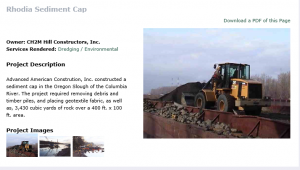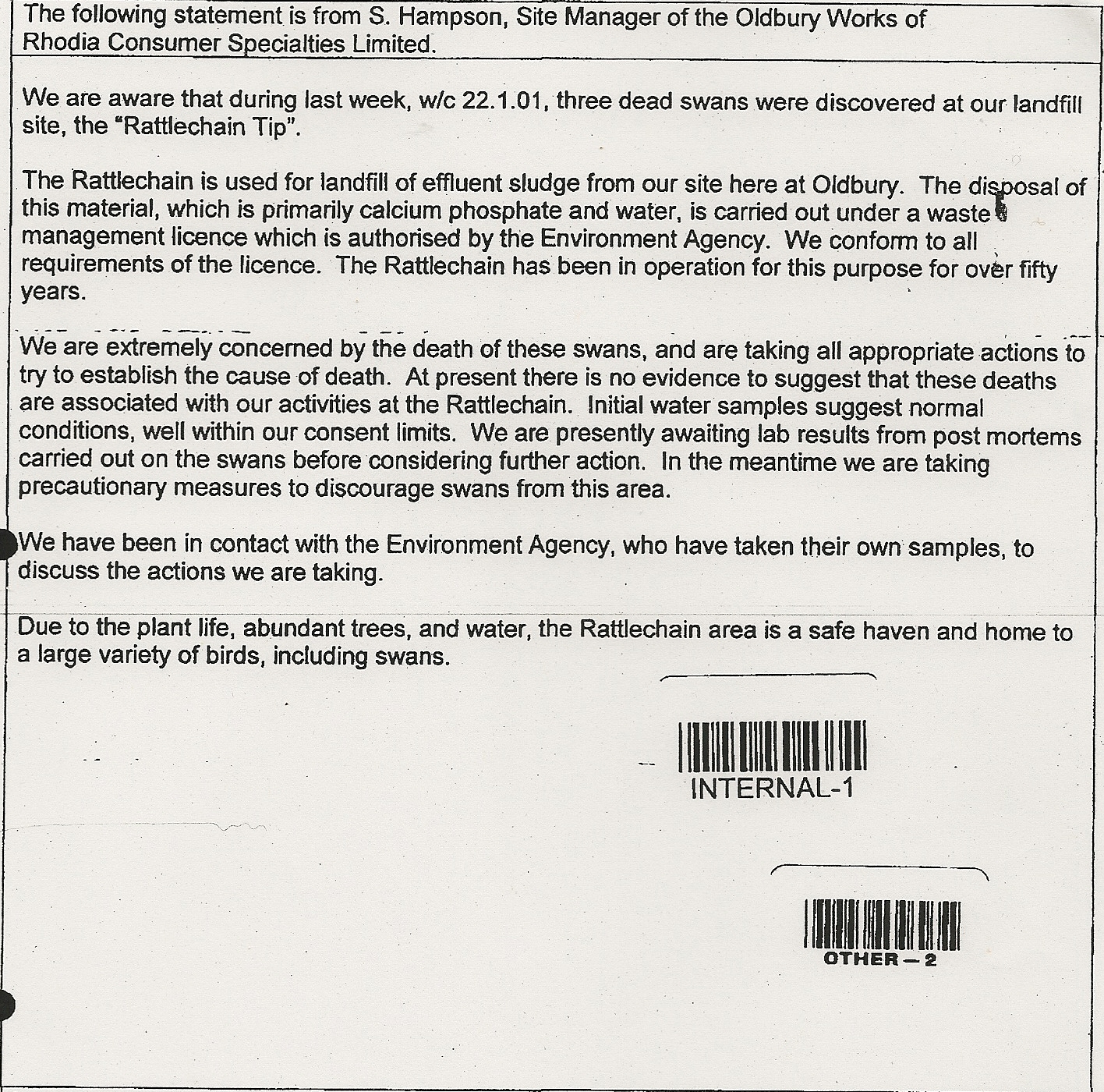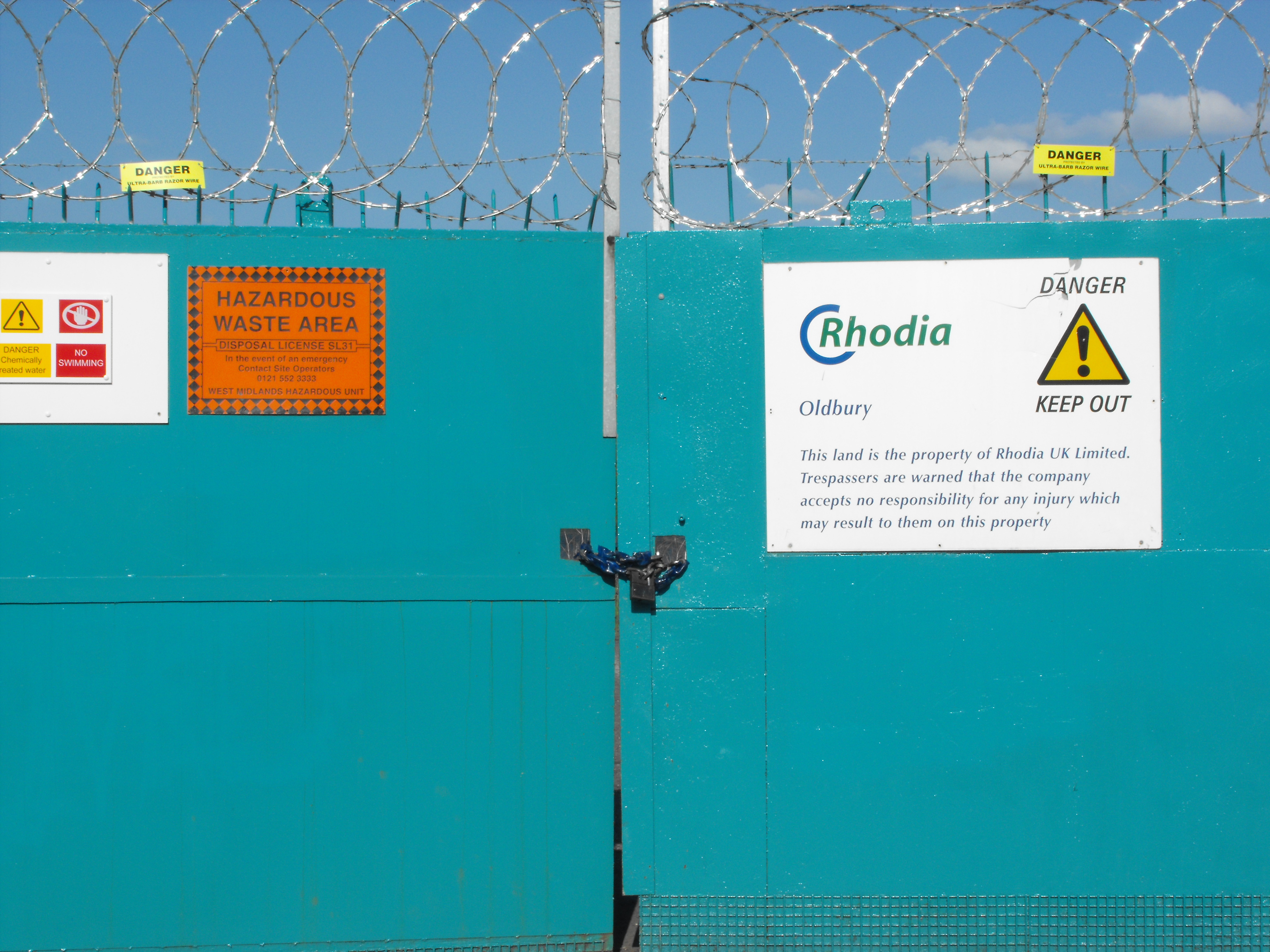The poison chalice of Albright and Wilson including Rattlechain lagoon was taken on by the French company, having production facilties in numerous countries. Here is one they left behind. And here is one below they capped with a geo-textile membrane- any bird mortality here?

Various sub divisions in the UK were in operation, with a familiar story at many of them. The aquisition of AW meant that the Langley factory became part of their “consumer specialties” – basically the same stuff they had been making as Albright and Wilson but with a different logo. The main business at Trinity Street remained Phosphorus performance derivatives (PPD).
Chemicals produced included organic phosphites, organic phosphates, organic alkylphosphonates, acid phosphates and organic pyrophosphoric acids. The starting blocks for all of these chemicals remains white phosphorus ( which is stored on site) together with phosphorus trichloride (PCl3), phosphorus oxychloride (POCl3) and phosphorus pentoxide (p205).
Rhodia consistently attempted to deny that there was anything harmful in the lagoon in the press, and that the deaths of birds were not as a result of their activities.
Rhodia maintained their satellite chemical toilet waste facility at Rattlechain, disposing of waste at the lagoon by Road tanker upto March 2006 whereby they no longer chose to continue this form of waste disposal. Legislation that came into force at this time would have made operations more difficult and expensive, and with the building of houses so close to the site at the former sewage works, the future of disposal would obviously have been a major concern for these residents. As it is, those residents appear to have been told little about the historic operations at the site or the potential health implications of living next to such a site. The site is classified as “A hazardous waste” area by the Environment Agency. This forms one of the main reasons for setting up this website.
Rhodia has submitted a “closure plan” detailing the infrastructure they have in place for the management and monitoring of the site during their “aftercare phase” of the operations, and they have to provide procedures in place for reporting to the EA any “significant” environmental effects during the aftercare phase. “The aftercare phase” will last until Rhodia satisfies the EA that the site can no longer pose any threat of pollution of the wider environment and successfully apply for a certificate of Completion in order to surrender their licence. This is unlikely by their own admission to be in the near future, but the submission of potential housing plans for the whole area including the lagoon offer a strange dichotomy. WHO WOULD WANT TO LIVE HERE?



